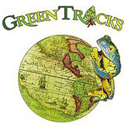Desert Life
Wallace daisies are tiny delicate flowers that sprout in seemingly impossible conditions. You have to get down and close to see them as they are just a couple inches tall.
Despite the dangerous roads the preserve has a fairly healthy population of lizards and snakes and I try to make it around to the different locations where I might better find one species or another. This year we are in a La Niña weather pattern; colder and wetter than normal. It is hard to tell what triggers which animals to come out and do their thing so I just go along surprised each year on what is out and what is not. That is part of the fun in returning year after year. This year, my wife and I were joined by 3 very close friends from the Seattle area – people likely more weary of the weather than I. I found myself hiking more than usual, that is hiking for the sake of hiking and views more than finding reptiles. I say reptiles, but in reality where I visit there is one species of amphibian, the red-spotted toad, Anaxyrus punctatus, that is easily found in the washes and springs during wet years. It is a magical experience to sit in a spring, back to the mountains, and hear the high trill of toads amidst the silence of the desert. Every out doors aficionado should try this once in their lives.
The Great Basin Collared lizard, Crotaphytus bicinctores, basks on a boulder in the Granite Mountains.
Sceloporus magister, the desert spiny lizard, is another common lizard found staking out territories on large boulders and even on utility poles. The brightly colored males, like many lizards, do push-up displays to warn intruders and attract mates.
Desert banded geckoes, Coleonyx variegatus, are fragile nocturnal lizards that you may see at the bases of bushes at night. You are more likely to see these crossing roads and they can be surprisingly quick when they need. This is a pretty adult male. We counted many of these running around asphalt roads at night. Unfortunately speeding cars and untrained eyes meant that many got squished.
And here is a close up view of a female.







5 comments
Great shots – thanks for sharing. My Mojave “aha” moment came when listening to Peter Gabriel’s Passion and making eye contact with a large coyote. For moments we stood staring at each other until he ran off for the evening’s dinner. How exciting to hear his triumphant howls shortly after. I don’t share this story often as I feel it cheapens the experience.
I look forward to your updates, stories, photos, and information you provide us who don’t get to travel. You’re always informative, interesting and you get us thinking. Most importantly, is the knowledge you provide. We can tell your heart is in what you do. Keep up the good work.
Shirley
Hello,
I loke your work.
Unfortunately, I am not able to see the photos.
Tried Chrome, IE8 both to no avail.
any thoughts?
BTW,
I am building a cabin not far from Kelso Dunes ( as the bird flies).
I also am intriguied by wild life especially that in the desert.
Have you visited Afton Canyon? (south of Baker just off I15)
Take care and keep up the “good” work ( the quality is great, but doing it for good is best.)
Perry
Perry, thanks for the comments. The photos posted in the blog are embededd as Flash .swf files. It is a meager attempt at controlling image theft. It could be that you have a Flash blocker installed?
Biographyflash.com is an Entertainment Blog that focuses on Fashion, Net Worth and Life Biology
Themefiles.us is a leading Tech Blog in Nigeria and the world